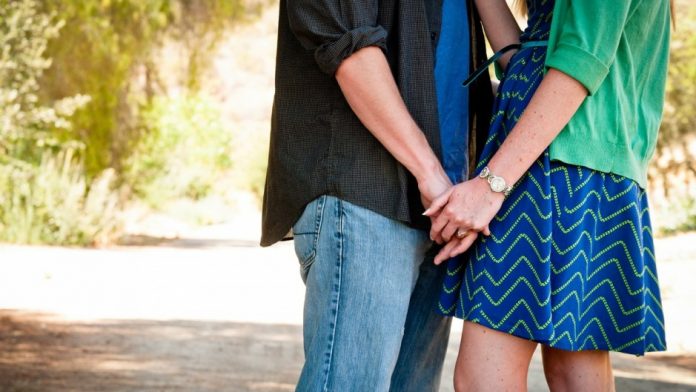Valentine’s Day is coming up, and more often than not, husbands, boyfriends, and hopeful male suitors are expected to get gifts or make plans to impress their dates.
Though it might seem contrived, it’s not without precedent. In the wild, males of many species participate in elaborate courtship rituals to impress a female who then chooses her preferred mate. I mean, who wouldn’t love to see someone dance like this?
The peacock spider (Maratus speciosus) is known for its elaborate mating dance.
Dino dating
It all goes back to the time of the dinosaurs. Scientists in Colorado, including Richard McCrea of the Peace Region Paleontological Centre in B.C., may have found evidence of a dinosaur mating dance. The paper, published in Scientific Reports earlier this year, describes four sites with extensive physical evidence of large scale scrapes in the rock, made by the left and right feet of certain dinosaurs. The authors believe that these markings are evidence of a “nest scrape” mating ceremony that some birds perform today.
A male Snowy Plover participating in a nest scrape mating ceremony.
These scrapes may provide rare behavioural evidence for non-avian dinosaurs’ relationship to birds, although it cannot be definitively proven that mating rituals were their origin.
Shake your tail feather
However, other fossil evidence corroborates that dinosaurs did engage in courtship displays and dances. Almost 4 years ago, research emerged that feathers in dinosaurs evolved for mating purposes rather than for flying. A paper published in Science by Prof. Darla Zelenitsky from the University of Calgary, speculated that the feathers present in Ornithomimus edmontonicus, a large ostrich-like dinosaur, could not have evolved for flying, simply because the 150 kg Ornithomimus was too large to fly.
Similarly, a study last year of two oviraptor fossils nicknamed Romeo and Juliet (does it get any more romantic than that?), proposed that oviraptor tail feathers were used for social or sexual displays, like in male turkeys and peacocks. The researchers from the University of Alberta and the American Museum of Natural History in New York, found that males Oviraptors had larger feathers and bigger tail muscles than females, despite their lack of flying capability. This could indicate that they swung their tail feathers up and down and side to side to impress.
The male peacock displays and shakes it large, beautifully colored tail.
Does size matter?
A recent study from McMaster, however, puts a damper on these theories. The study, published in PLOS ONE, shows that female fruit flies prefer larger males, but only because they arouse the females faster. If the female is already aroused, she has no preference. This speaks against the need for elaborate courtship rituals to impress females and rather points to a more biological basis for mate preference.
So this Valentine’s Day, whether you plan something special or not, science has your back.








































